Late August through October is a perfect time to observe new birds as they migrate to their winter homes. A couple of days ago, I spotted a pair of common yellowthroats in one of the front gardens and was able to take a few photographs. I believe this male is pretty young, as his black mask is still developing and the other warbler was a female. The common yellowthroat Geothlypis trichas is a New World warbler. These small songbirds have olive backs, wings, and tails, as well as yellow throats, chests, and white bellies. They have chunky, rounded heads and medium-length, slightly rounded tails.
I usually see these birds around the yard much sooner during the summer and I thought I had missed my chance before they begin to migrate. These warblers enjoy the diverse vegetation that our yard provides. These birds forage low to the ground and inhabit areas with dense undergrowth. I have seen males in the backyard among the raspberry and blackberry bushes as well as in the side and front gardens. I have seen the females in the same places as the males, but at the feeders as well. In this post, I would like to share a few photographs and some background information on these fascinating birds.

Common yellowthroats can be found in North America, ranging from southern Canada to central Mexico.
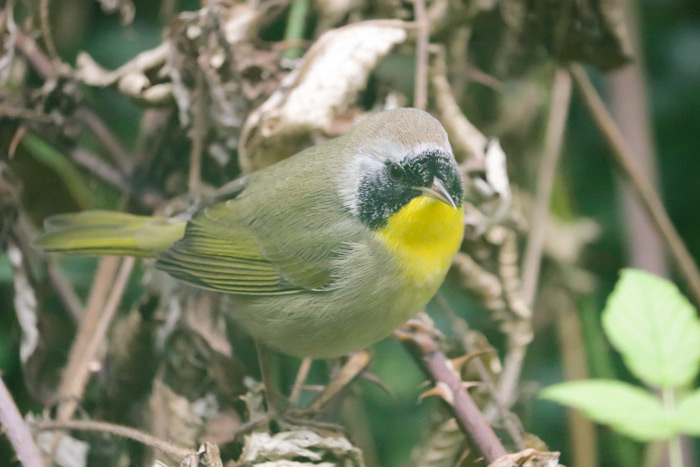
Common yellowthroat males have a distinctive black face mask with a white border at the top and a bright yellow throat that extends into its breast. It is yellow below to under the tail, with a solid olive back.

Female common yellowthroats are plain olive-brown in color, with the same yellow brightening the throat and under the tail as the males, but lack the black mask.
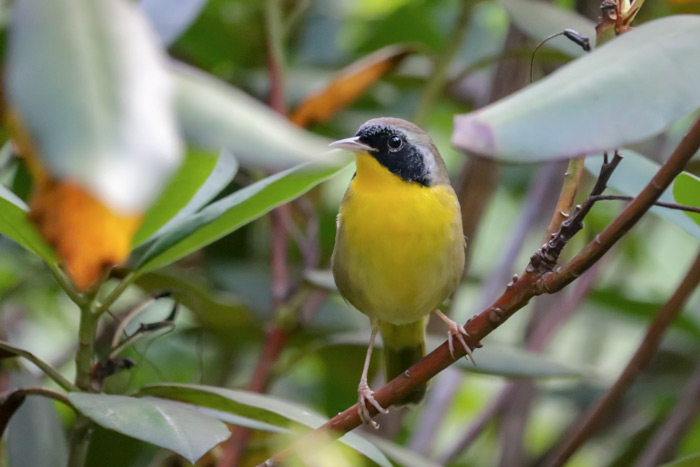
You can find the common yellowthroat typically inhabiting cattail marshes and other wet habitats with low dense growth. These birds nest in briars, moist brushy areas, tangles of rank weeds, and shrubbery along streams and overgrown fields. During migration and winter, they are still commonly found in marshes, but also occur in any kind of brushy or wooded area.

Common yellowthroats will spend much of their time searching low on the ground in dense thickets and fields, searching for mostly insects. They feed mainly on insects, including small grasshoppers, dragonflies, damselflies, mayflies, beetles, grubs, cankerworms, and other caterpillars, moths, flies, ants, aphids, spiders, and a few seeds.
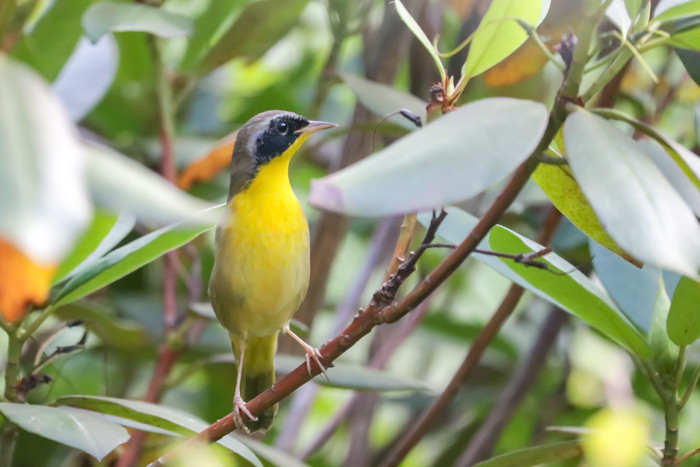
The male common yellowthroats have a very distinctive, rolling wichety-wichety-wichety song.
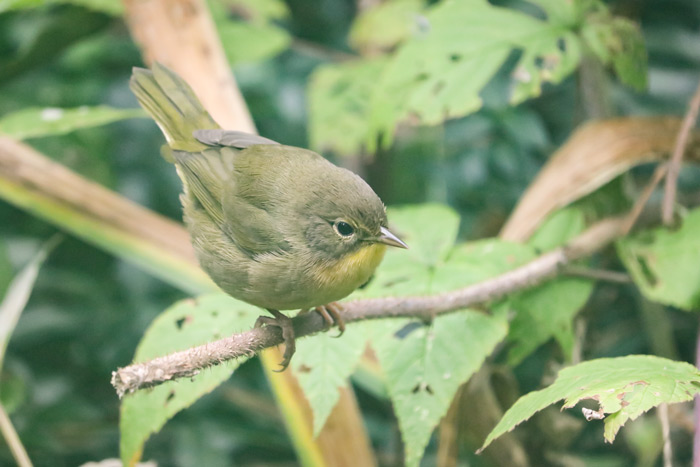
Both sexes of common yellowthroats give a full-sounding chuck note that is easy to recognize.
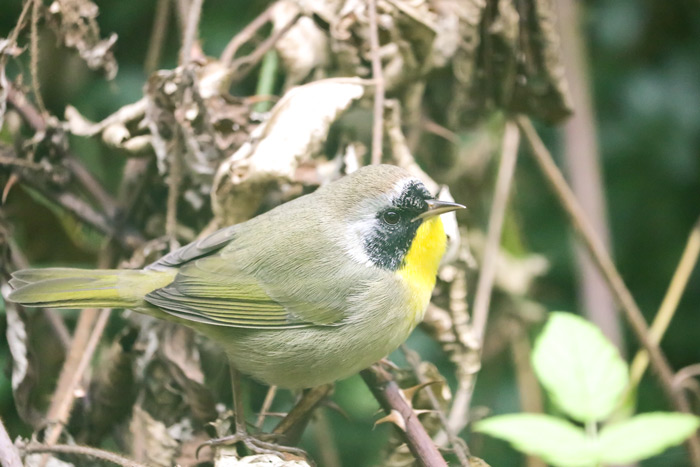
Common yellowthroats are mostly monogamous. Females appear to prefer males with larger masks. Breeding habitats are in marshes and other wet areas with dense low vegetation The female selects the nest site and builds a cup-shaped nest, which is usually within three feet off the ground in vegetation such as shrubs or grasses. The female will lay three to five eggs. Eggs are incubated by the female only and eggs will hatch after ten days. Both parents feed the young for at least two weeks. They will usually raise two broods a season. When the first brood leaves, the female will start the second brood and the male feeds the fledglings.
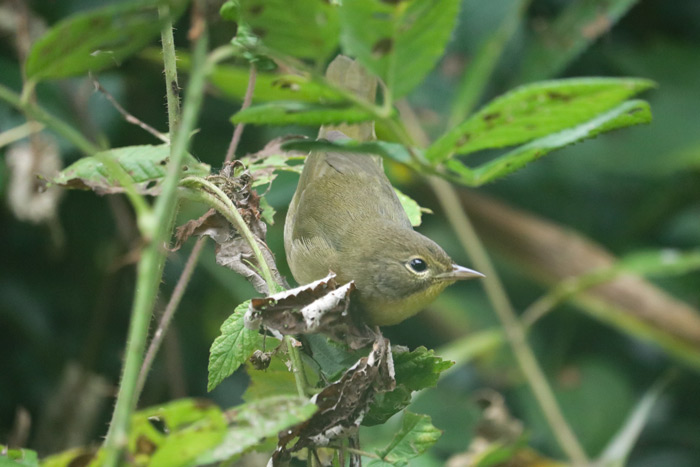
Routes of migration can vary based on the season and location of common yellowthroats. During fall migration, from August to October, common yellowthroats in Canada, Western, Eastern, and Central U.S., and regions outside of the United States will all have unique migration routes. Some populations in the southern United States and Mexico will stay year-round. Many individuals that winter in Central America fly across the Gulf of Mexico on their way north in the spring. When migrating in the fall months, adults and immature birds tend to arrive at their migration destinations around the same time. Migration differences in timing and routes are also seen during the spring months from early February to late May across the United States, Canada, and other areas. Males will generally arrive at their destination site before the females during the spring migration.
Resources used for this post:
allaboutbirds.org & audubon.org
Leave a Reply